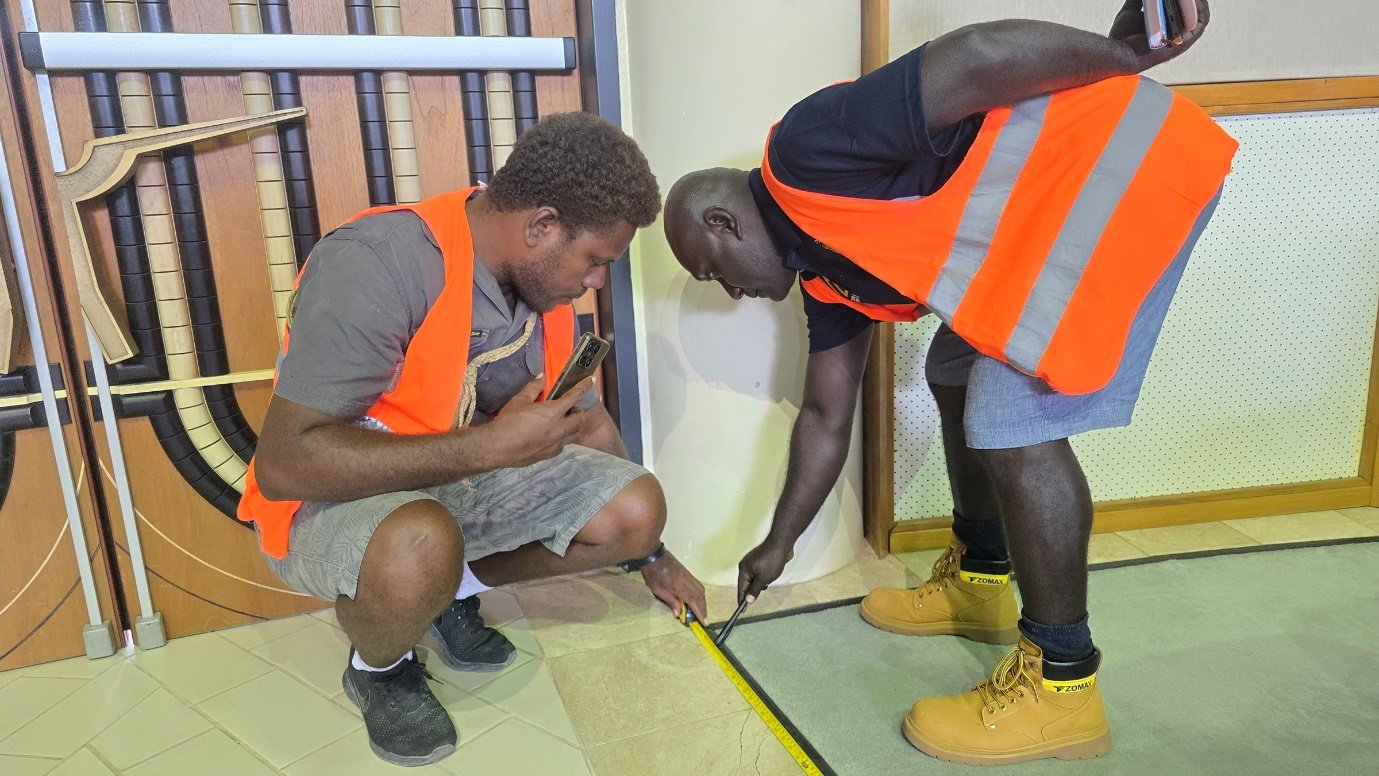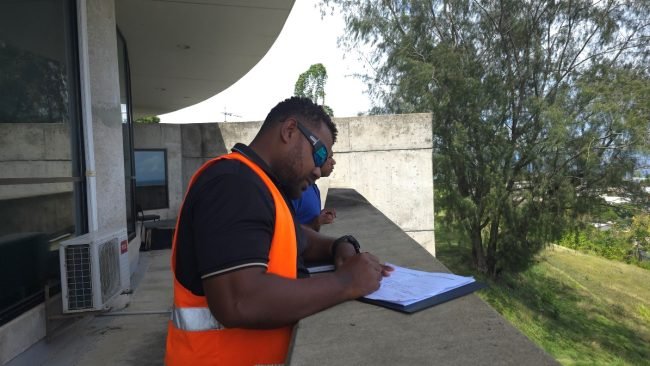
MID’s Architecture and Building Management Services Division Reinforces Commitment to Safety Standards
The Architecture and Building Management Services Division (ABMSD) at the Ministry of Infrastructure Development is intensifying its focus on upholding and advancing building safety standards, following the recent passing of the National Building Standards Act 2025 in parliament.
As the custodian of this landmark legislation, ABMSD has stepped up its activities in conducting inspections, identifying maintenance needs, innovating design solutions, and performing technical evaluations and expert recommendations.
This new act, together with the National Building Code and Building Manual, marks the initial steps taken by the division to establish a robust and comprehensive framework for enforcement.
Collaborative efforts with key stakeholders are currently in progress, and expected to accelerate the implementation of its regulatory measures.

Paul Kaotara and Lionel Taniveke during the inspection of the National Parliament chambers
Ron Gua, Chief Architect (Quality Assurance and Asset Management), highlighted the division’s ongoing commitment to teamwork and excellence in building assessments and project management.
“We recently conducted inspections of major government facilities, including the National Parliament, Office of the Opposition, Independent Office, High Court Complex, Magistrate Courts, Biosecurity Office, and other government buildings,” Mr. Gua said.
“For each conditional inspection, we adopt a collaborative approach—bringing together architects, quantity surveyors, plumbers, electricians, and engineers—to ensure thorough evaluations. Our goal is to uphold structural integrity and safety across all government properties,” he added.
Most government buildings, residences, and non-residential buildings are aging.
The division will continue to support the construction of new, modern, and climate-resilient infrastructures to replace and upgrade these facilities to serve its purpose.

Ron Gua, Chief Architect (Quality Assurance and Asset Management), highlighted the division’s ongoing commitment to teamwork and excellence in building assessments and project management
Mr. Gua also expressed appreciation for the support of the ministry’s Minister, Hon. Ricky Fuo’o, whose leadership has been instrumental in advancing the division’s role within the construction industry.
“Our primary focus now is establishing clear standards and ensuring safety in all projects,” he emphasized.
Acting Director Paul Chris Hoiasi highlighted the urgency of developing a resilient regulatory framework to address rapid urbanization, climate change, and increasing infrastructural demands.
“Urban centers, particularly Honiara and other provincial capitals, are expanding at an unprecedented pace, leading to unregulated construction activities that often lack proper planning and oversight,” Mr. Hoiasi said.
He detailed that, under the Building Code, building materials will undergo stringent Quality Assurance and Control processes to ensure suitability and safety within our context.
The government architect further added that initial procedures—such as environmental surveys, Unexploded Ordnance (UXO) assessments, geotechnical investigations, among others—are fundamental to achieving safe and sustainable development as stipulated in the act.
In the meantime, consultations and recruitment will commence next year, marking the transition phase toward its enforcement. One of the key setups is the advisory board, which should commence shortly.
[end]
MID statement
